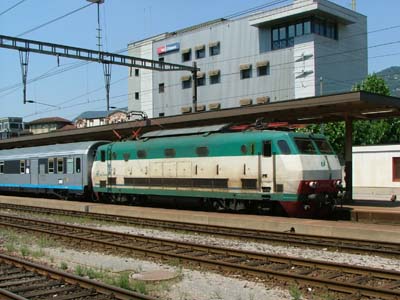Master Railway Photographer John Vaughan’s The Power of the Warships is dedicated to the twin-engined diesel-hydraulics known as the Warships.
is dedicated to the twin-engined diesel-hydraulics known as the Warships.
The “Warships” weren’t a single class of locomotive, but three. The first five, built by North British in Glasgow, were 117 ton six-axle machines, numbered from D600-D604. Vaughan refers to these as class 41s, although this class designation was never official. The more numerous class 42s and 43 were much lighter four-axle locomotives, similar in outward appearance to each other but bearing no external resemblance to the earlier machines. The D600s were short-lived, all withdrawn in 1967. The 43s and 42s lasted a few years longer, but had gone by the end of 1972. Two 42s survive in preservation, now museum pieces for far more years than they were in service.
Controversy reigns among enthusiasts as to whether the diesel-hydraulics came to a premature end as a result of internal BR politics, or whether they were flawed machines that should never have been built. Vaughan strongly subscribes to the former view, pointing out that in their later years they ran annual mileages exceeding those of comparable diesel-electrics.
But this volume is not really an academic history; it’s first and foremost a gallery of photographs. Some 240 black and white photographs show the three classes at work throughout the Western region and beyond, and continue with some shots of D831 “Greyhound” and D832 “Onslaught” in preservation on the East Lancashire, West Somerset and North York Moors railways.
The pictures of the class in BR service cover the whole of their brief careers, sharing duties with steam in the late 50s, to their rundown in the early 70s, by then largely relegated to secondary duties. We see them on West of England expresses, some of which are of as much interest to coaching stock enthusiasts as to Warship fans. One of my favourites is D811 on the up “Mayflower” in 1960, hauling a rake of immaculate Chocolate and Cream Mk1s, except for a Maroon Gresley corridor second behind the loco. We see their glorious swansong in 1968/9, when pairs of them handled accellerated Plymouth expresses. There are the obligatory (for me at least) shots of them at work on china clay, milk and parcels traffic in Cornwall. There are also plenty of shots on ex-Southern metals, not just the well-known Waterloo-Exeter trains, but also the now-closed Ilfracombe branch, and on stone traffic during construction of the M23.
Although shots of 42s and 43s predominate, there are some illustrations of the five D600s, mostly from their early years. These lumbering beasts were relegated to local workings in Cornwall as soon as there were sufficient 42s and 43s in service. Operating in an area fully dieselised as early as 1962, and working low mileages, it’s not surprising that they were seldom photographed. There’s still no photographic evidence of D600 in BR blue actually hauling a train.
There are just one or two slightly blurry or grainy shots, included for historical interest, as well as some images that have been published before. I noticed one or two minor errors in captions; in one photo at Battledown in Hampshire the SE Bullied coach behind the loco is wrongly described as a BFK rather than a BCK. But these a minor quibbles. If you like Warships, you will want this book.
